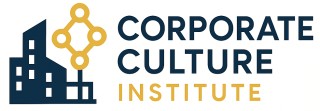
Understanding the Importance of a Team Standards Manifesto
The Foundation of Cohesive Work Environments
In the fast-paced world of software development and agile processes, creating a cohesive corporate culture is more crucial than ever. A Team Standards Manifesto serves as a guiding document that aligns team members with the core values and principles of the organization. It is not just a set of rules but a reflection of the collective ethos of the team, ensuring everyone is on the same page when it comes to working together effectively.
Why a Manifesto Matters
At its core, a team manifesto is about setting clear expectations and fostering an environment where people can thrive. It is a vital tool for agile teams who rely on flexibility and adaptability to deliver working software efficiently. By establishing a shared understanding of best practices and values, teams can minimize misunderstandings and enhance collaboration.
Moreover, a well-crafted manifesto can serve as a benchmark for project management and decision-making processes. It helps team members navigate challenges and maintain focus on the customer and product goals. For those interested in exploring examples of effective leadership goals in corporate culture, understanding the importance of a manifesto is a great starting point.
Aligning with Agile Methodologies
The agile manifesto has long emphasized the importance of individuals and interactions over processes and tools. A team standards manifesto echoes this sentiment by prioritizing the values and principles that drive agile teams to success. It is about creating an environment where software developers can do their best work by focusing on what truly matters: delivering value to the customer.
As you delve deeper into the process of developing and implementing a manifesto, you will find that it not only enhances team cohesion but also contributes to the overall success of your project. The journey from understanding its importance to measuring its impact is a transformative one, paving the way for a more unified and effective work environment.
Key Elements of an Effective Team Standards Manifesto
Essential Components for a Strong Manifesto
An effective team standards manifesto serves as a compass for navigating project management and fostering cohesive corporate culture. It must encompass key elements that resonate with both agile teams and traditional work environments.
Clear Values and Principles
Values and principles sit at the core of any successful manifesto. Agile processes thrive on transparency, collaboration, and adaptability—principles that should be clearly articulated. The values agile teams hold guide decisions and align the team’s efforts. This is especially crucial in understanding the role of a people manager in corporate culture. Clearly outlining these values ensures that all team members are on the same page, promoting harmony in their work.
Commitment to Best Practices
Addressing adherence to best practices is vital for both development and implementation in software projects. Highlighting commitments to best work practices within the manifesto not only sets an expectation but also empowers team members. This encouragement leads to improved processes and tools utilization which in turn fosters an environment conducive to producing quality products.
Focus on Collaboration and Communication
In high-performing agile software development environments, fostering a culture of collaboration and effective communication contributes to delivering working software efficiently. By emphasizing these aspects within the manifesto, teams can check the focus remains sharpened on engaging with customers and each other seamlessly. This focus minimizes misunderstandings and promotes a cohesive working atmosphere.
Continuous Improvement and Flexibility
Embracing a culture of continuous improvement sets successful teams apart. An effective team manifesto will place an emphasis on constant development and a willingness to pivot as needed. Agile methodology supports this by prioritizing the need for feedback loops and iterative progress in software development. Such a focus ensures teams remain adaptable in the face of change and can meet project requirements over time effectively.
Roles and Responsibilities Clarity
Clearly defined roles within the manifesto advocate for accountability and team efficiency. Clear delineation of team member responsibilities allows for coherence and reduces overlaps or confusion during the project stages. This aspect of the manifesto supports the notion that roles should accentuate each team member's strengths while also addressing areas for growth.
Steps to Develop a Team Standards Manifesto
Create a Comprehensive Team Framework
Begin developing a team standards manifesto by gathering input from all team members. This step is crucial, as it helps in laying a strong foundation for the manifesto. Engaging with the team imparts a sense of ownership and strengthens commitment to the established values and principles. Conduct dedicated sessions where team members can express their thoughts and provide insights into the best work practices crucial for the team’s success.
Identify Guiding Values and Principles
Once you have gathered the necessary input, identify the core values and principles crucial for the team’s agile processes. Reflect on elements of the agile manifesto to inspire elements that best align with your team's goals. These could include focus areas such as working software, interacting with customers, and focusing on people over processes and tools. These guiding principles will direct the behavior and mindset of the team as they develop projects.
Define Clear Expectations and Goals
Articulate clear expectations and goals that can be measured. This involves defining concrete objectives critical to the team’s performance, ensuring alignment with our chosen principles agile, and team values agile. Establish performance metrics like project completion timelines or software development milestones that reflect these expectations. This clarity helps gauge the team’s progress and assure that everyone is working towards shared objectives.
Craft the Language of the Manifesto
The language of your manifesto should be straightforward, concise, and clearly communicate the team’s mission and expectations. Avoid technical jargon unless it’s understood broadly within the team. It should be a living document that’s easily readable for any team member at any time, forming a constant reminder of the agreed-upon principles. Update it when necessary as the team evolves and projects develop.
Document, Share, and Review
Once everything is set, document your team standards manifesto comprehensively. Make it accessible by sharing the final version with the team and ensuring it's always available for reference. Reviewing the manifesto at regular intervals will ensure that the team remains aligned with its core values and objectives.
The creation of a team manifesto is an iterative process and should evolve as the team grows and agile projects develop. Consistent engagement and reflection will result in a strong and cohesive corporate culture, fostering an environment where the team thrives.
Consider celebrating your achievements and incorporating appreciation into your methodologies. Learn about the power of employee appreciation to further enrich your corporate culture.
Implementing the Manifesto in Your Organization
Successfully Integrating the Manifesto in Your Daily Routine
Bringing a team standards manifesto to life is the next vital step after its development. It involves embedding the values and principles outlined in the manifesto into your organization's daily operations. For teams, particularly those operating within agile processes or involved in software development, the integration requires intentional effort and collaboration among team members.
Communicate Clearly
To ensure everyone is on board, clear communication is essential. Begin by sharing the team's manifesto in a manner that's easily accessible and understandable. Encourage team members to discuss it openly, ask questions, and provide feedback. This dialog promotes a deeper understanding of the values and principles, leading to better buy-in.
Create Alignment with Existing Processes
Align the team manifesto with current working methods and project management processes. In the context of agile methodology, this might mean revisiting practices such as daily stand-ups, retrospectives, and sprint planning to ensure they reflect the manifesto's values. The agile manifesto can serve as a reference point, emphasizing the importance of individuals, interactions, and working software over rigid adherence to processes and tools.
Regular Reinforcement
Consider regular meetings or brief workshops as opportunities to reiterate the manifesto's principles and evaluate how well they are being adhered to. These sessions can fortify the connection between the team's goals and the organization’s mission.
Adopting Best Practices
Best practices already established within the organization can act as a strong foundation for implementing the manifesto. For instance, agile teams may utilize retrospectives not only to reflect on past performance but to tackle how effectively the team manifesto is being implemented.
Continuous Feedback Loop
Ensure there is a feedback mechanism in place where team members can share their experiences and suggest improvements. This continuous loop will help refine and cement the use of the manifesto over time, making it an integral part of team development culture.
Implementing a team standards manifesto requires patience and persistence, but its presence will ultimately help agile teams create a more cohesive, values-oriented work environment. The success of this implementation depends on the active participation of all team members and the alignment of the manifesto with ongoing project initiatives.
Overcoming Challenges in Adopting a Team Standards Manifesto
Facing the Hurdles in Integrating a Team Standards Manifesto
Successfully integrating a Team Standards Manifesto in an organization requires overcoming several challenges, especially as you introduce new principles and values into the day-to-day work of agile teams. These hurdles can stem from a variety of factors, including resistance to change, misunderstandings, and time constraints. Understanding these obstacles is essential for ensuring the manifesto enhances your corporate culture effectively. In agile software development, team members may be accustomed to using certain methods or processes. When a new manifesto is introduced, it involves shifting some of these established practices. This shift can cause friction among software developers or management teams who are concerned about adherence to new working software principles or who simply prefer traditional ways of doing things. Moreover, a lack of clarity in the manifesto can pose significant challenges. If the document does not clearly outline the agile values and principles it aims to instill, teams may struggle to align their work practices with the desired outcomes. Ensuring that the team manifesto is explicit in its intent and comprehensible to everyone involved is vital. Time constraints also play a significant role in the integration process. Project management schedules, customer demands, and product delivery timelines can make it difficult for teams to dedicate sufficient time. Agile teams need time to read, understand, and adapt to new working practices, so balancing these demands is critical. Finally, the human element – the people within your organization – cannot be overstated. Team members must feel part of the change and acknowledge the ways in which the manifesto will enhance their best work. Creating an environment where everyone’s voice is heard and valued helps in managing resistance and encourages a collective move towards shared values. Addressing these challenges requires a strategic approach. Leadership plays a crucial role in guiding teams through this transformation, consistently reinforcing the importance of the manifesto in achieving the organization's agile processes and long-term goals. Fostering open communication, providing training, and making incremental adjustments rather than sweeping changes can help smooth the way for implementation, ensuring that the manifesto leads to improved practices and cohesive team dynamics.Measuring the Impact of a Team Standards Manifesto
Assessing the Outcomes of a Team Standards Manifesto
Measuring the impact of a Team Standards Manifesto is essential to ensure that it brings the intended benefits to your organization. This process involves evaluating both qualitative and quantitative outcomes, which will provide a comprehensive picture of how the manifesto influences the team and organizational culture.Here are key areas where you can assess the effectiveness of your Team Standards Manifesto:
- Team Cohesion and Collaboration: Observe your teams to see if there is improved communication, collaboration, and a sense of belonging among team members. A successful manifesto should foster an environment where agile teams work together effectively, adhering to shared values and principles.
- Project Efficiency: Review project management metrics to determine if the manifesto has positively impacted the speed and quality of project completion. An effective manifesto should support agile methodology and processes, leading to more efficient and productive teams.
- Product Quality: Monitor feedback from software development and product launches. Enhanced adherence to the team manifesto often results in better working software and increased customer satisfaction due to improved processes and tools.
- Employee Satisfaction: Conduct regular surveys and gather feedback from the team members to understand how the manifesto influences their work experience and job satisfaction. Satisfied employees are more likely to produce their best work and contribute positively to the workplace culture.
- Adaptability to Change: Evaluate how swiftly and effectively teams adapt to change, a crucial component of agile processes. A well-crafted manifesto should empower the team to embrace change and continuously improve.
Regularly assessing these dimensions will allow you to identify areas for improvement and reinforce the aspects where the manifesto is effective. Continuous monitoring also ensures that the manifesto remains aligned with evolving corporate objectives and agile values, driving both team and organizational success.













